
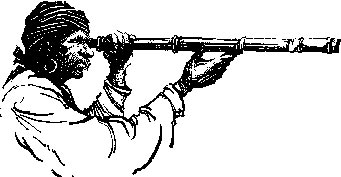
SQUASH BUG to become active;
STALK BORER damage in wilted plants;
CUCUMBER BEETLES on yellow squash;
beginning of JAPANESE BEETLE attack;
MOSQUTOES developing in standing water - bird baths, watering troughs, etc.


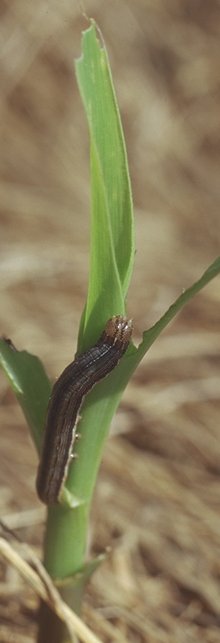 More than a month ago, counts of moths captured in pheromone-baited traps run by the UK-IPM program warned of potentially large populations of true armyworms in 2006. By combining the technologies of insect trapping and population development based on degree-day predictions, we were able to estimate when to monitor for armyworm populations. These technologies can be used to predict WHEN a problem will occur but not IF it will occur. The "IF" depends upon the survival of the pest insects, which is largely dependent upon the impact of its natural enemies (predators, parasitoids and disease).
More than a month ago, counts of moths captured in pheromone-baited traps run by the UK-IPM program warned of potentially large populations of true armyworms in 2006. By combining the technologies of insect trapping and population development based on degree-day predictions, we were able to estimate when to monitor for armyworm populations. These technologies can be used to predict WHEN a problem will occur but not IF it will occur. The "IF" depends upon the survival of the pest insects, which is largely dependent upon the impact of its natural enemies (predators, parasitoids and disease).
In 2006 we see the impact of both the use of these basic insect technologies and the importance of natural control. The last major outbreak of true armyworm occurred in 2001, not only in Kentucky but in states north of us all the way into Canada. The number of moths our traps captured in 2006 was much greater than the numbers captured in 2001, so we knew the potential for an outbreak was great. Applying the temperature driven insect development models, we also predicted that if an outbreak occurred it would likely be in the second half of May through the first full week in June.
No general outbreak occurred. However, several small areas of infestation did occur and several were treated with insecticides. Additionally, in the central portion if the state very large populations of true armyworm destroyed the first cutting of grass forage crops in several locations. So, our trap counts that indicated the possibility of large populations of true armyworm were correct. Additionally, the timing of these pests was accurate. Fortunately, a widespread outbreak did not occur. This was probably due to the control applied to the true armyworm populations by natural enemies. Predators and parasitoids feeding on and diseases infecting the pest are an every year occurrence. Natural control is in fact the reason why we do not have true armyworm outbreaks every year. This year provides a graphic illustration of how important the natural control process is every year, and why it is important to protect it.

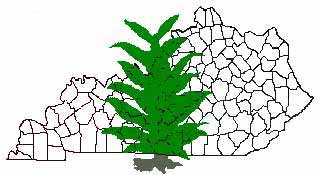
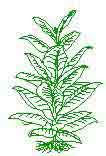 Tomato spotted wilt (TSW) has cropped up again this year on burley and dark tobacco. Six cases have been
confirmed by Paul Bachi, our diagnostician located in Princeton, over the past two weeks; one case from
central Kentucky was confirmed by Julie Beale in the Lexington Diagnostic lab today. The incidence of
symptomatic plants in most fields appears to be low, but I have learned that as much as 20% of the dark
tobacco planted in one field in Todd Co. may have had TSW. This is a pretty high level of disease for
KY, where we tend to see 2-3% incidence in a given year. Losses to TSW tend to be low in most years
when averaged across the Commonwealth, although economically significant decreases in yield can occur
on individual farms.
The causal agent of TSW is the Tomato spotted wilt virus (TSWV) and is transmitted to susceptible host
plants by several species of thrips, including the western flower thrips (Frankliniella occidentalis)
and the tobacco thrips (F. fusca). Larval and adult thrips transmit the virus during feeding,
but the virus can be acquired by larvae only. Following acquisition of TSWV, thrips remain viruliferous
for life. It is believed that ~10% of the thrips population in an area with endemic TSW actually
carries TSWV. Thrips feed on a number of plant species, and TSWV has many hosts in nature
(including tomato, pepper, and many ornamental plants). Thus there are numerous reservoirs for both
the virus and vector in areas where tobacco is grown.
Tobacco can be infected by TSWV at any stage of growth. It is believed that plants are most susceptible when young and actively growing. Severe stunting or death is likely if tobacco becomes infected with TSWV prior to layby. Numerous symptoms of TSW can be observed: ringspots on leaves and stems, necrotic spots on leaves, leaf distortion, necrosis of the root or vascular system, yellowing, stunting, and wilting.
Tomato spotted wilt (TSW) has cropped up again this year on burley and dark tobacco. Six cases have been
confirmed by Paul Bachi, our diagnostician located in Princeton, over the past two weeks; one case from
central Kentucky was confirmed by Julie Beale in the Lexington Diagnostic lab today. The incidence of
symptomatic plants in most fields appears to be low, but I have learned that as much as 20% of the dark
tobacco planted in one field in Todd Co. may have had TSW. This is a pretty high level of disease for
KY, where we tend to see 2-3% incidence in a given year. Losses to TSW tend to be low in most years
when averaged across the Commonwealth, although economically significant decreases in yield can occur
on individual farms.
The causal agent of TSW is the Tomato spotted wilt virus (TSWV) and is transmitted to susceptible host
plants by several species of thrips, including the western flower thrips (Frankliniella occidentalis)
and the tobacco thrips (F. fusca). Larval and adult thrips transmit the virus during feeding,
but the virus can be acquired by larvae only. Following acquisition of TSWV, thrips remain viruliferous
for life. It is believed that ~10% of the thrips population in an area with endemic TSW actually
carries TSWV. Thrips feed on a number of plant species, and TSWV has many hosts in nature
(including tomato, pepper, and many ornamental plants). Thus there are numerous reservoirs for both
the virus and vector in areas where tobacco is grown.
Tobacco can be infected by TSWV at any stage of growth. It is believed that plants are most susceptible when young and actively growing. Severe stunting or death is likely if tobacco becomes infected with TSWV prior to layby. Numerous symptoms of TSW can be observed: ringspots on leaves and stems, necrotic spots on leaves, leaf distortion, necrosis of the root or vascular system, yellowing, stunting, and wilting.
Management of TSW on tobacco can be difficult due to the nature of the virus and vector that transmits it. In most situations, secondary spread (movement from infected to healthy tobacco) of TSW within a field of tobacco is of little epidemiological significance; most damage is caused from initial infections brought about by viruliferous thrips moving in from outside a given field. Thus, control of thrips immediately after transplanting has the most impact on suppression of TSW. Moderate success has been achieved by application of imidacloprid (Admire) or thiamethoxam (Platinum) to seedlings as a tray drench. Addition of these insecticides to transplant water has been less effective against TSW than the tray drench method. In other areas where TSW is problematic, planting at a time when thrips are less active (late spring) has helped reduce losses to the disease. Tobacco varieties with resistance to TSWV are not known at this time. Research in other parts of the country has shown that losses to TSW can be reduced to a degree by minimizing stress to plants (drought, pest, and nutrient). Removal of symptomatic plants (roguing) is of little value because of the relative unimportance of secondary spread to the overall epidemic in a particular field.
For more information regarding TSW and its control, visit the Tomato Spotted Wilt page maintained at the University of Georgia (www.tomatospottedwiltinfo.org/tobacco/index.htm). Another excellent source of information is: www.ces.ncsu.edu/robeson/agriculture/tomspotwiltvirus.pdf.
 No new cases of blue mold were reported in KY during the week of June 5; however, the disease was found June
8 on tobacco transplants in a float bed located in Lancaster, PA. The origin of the PA outbreak is not
known.
No new cases of blue mold were reported in KY during the week of June 5; however, the disease was found June
8 on tobacco transplants in a float bed located in Lancaster, PA. The origin of the PA outbreak is not
known.
Do we have active blue mold in KY at the moment? It seems likely, given the number of cases found during the past few weeks. Favorable weather for development and spread of blue mold occurred over this past weekend in Kentucky. We may, therefore, find new cases of the disease in the coming days. Hopefully our growers have been putting out fungicides preventively when the weather allowed them to get in the field. The forecast for the next 10 days shows a warming trend in KY, with a few chances of isolated thunderstorms scattered over that time frame, which should suppress blue mold across most of the Commonwealth. Still, forecasts are not guaranteed and the weather could change, so please advise growers to check for blue mold (and other diseases) and think preventively when it comes to disease management. Let me know also if you find blue mold or suspect it in your area. I will continue to send out emails to keep you posted on the situation, and you can visit the Kentucky Tobacco Disease Information page for regular updates on blue mold and other diseases
For the latest blue mold status and other tobacco disease information, check the KY Blue Mold Warning System online.
![]() http://www.uky.edu/Agriculture/kpn/kyblue/kyblue.htm
http://www.uky.edu/Agriculture/kpn/kyblue/kyblue.htm

For more information about tobacco pests, visit "Insect Management Recommendations".
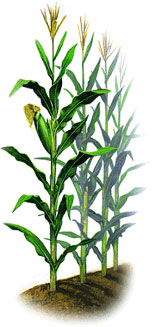
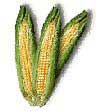 Some producers are considering the use of foliar fungicides this year in corn. In my opinion, most Kentucky corn fields would not benefit from the application of a fungicide, but there are cases every now and then where an application may be economically justifiable. The difficulty in identifying these cases in advance is that disease development is so dependent on the weather that it is difficult to be confident when a given corn field will benefit economically from the application.
Some producers are considering the use of foliar fungicides this year in corn. In my opinion, most Kentucky corn fields would not benefit from the application of a fungicide, but there are cases every now and then where an application may be economically justifiable. The difficulty in identifying these cases in advance is that disease development is so dependent on the weather that it is difficult to be confident when a given corn field will benefit economically from the application.
Which diseases are of concern?
Two diseases probably should be on the radar screen this year for growers considering fungicide applications: gray leaf spot (caused by the fungus Cercospora zeae-maydis) and northern leaf blight (caused by Setosphaeria turcica). Both survive in previously infected corn tissues: leaf blades and sheaths, and husks. Year in and year out, gray leaf spot (GLS) is a significant risk in fields in conservation tillage. Normally, northern leaf blight (NLB) is not much of a concern this far south, but we had an unusually cool, wet summer in 2004, and NLB became epidemic in many fields in Kentucky and surrounding regions. There is a risk of carryover of some inoculum in those fields, assuming they are back in corn after a rotation to soybeans last year.
Which fields are at risk of yield loss?
Since infested corn leaf residue is the source of infectious spores of for both GLS and NLB, high spore levels usually occur in no-till, continuous corn fields; these are high-risk fields. Moderate risk fields include the following: no-till fields that were in corn two years ago and were in soybeans or wheat/double-crop soybeans last year; and fields in corn last year that were disced only (if 35+ percent residue cover remains). Levels of primary inoculum are lower in these fields than in high-risk fields, although damaging outbreaks of gray leaf spot can occur, depending on hybrid, planting date and weather during the growing season. Fields with little to no risk include: no-till fields having two growing seasons without corn; disced fields with no corn last year; and fields that were moldboard- plowed, regardless of cropping history.
The only "wild card" about these comments is that corn residue from a neighboring no-till field planted to a susceptible corn crop last year can serve as a significant source of inoculum for corn planted up to 300-500 feet away, or for any field if it is planted very late (say, in June).
Can the disease be controlled adequately with hybrid selection? Quite a few hybrids are available with enough partial resistance against GLS for adequate yields. Compared to a susceptible hybrid, a corn hybrid that has partial resistance to GLS exhibits smaller lesions, a delay in lesion development, and/or reduced sporulation in lesions. While disease development is not prevented completely, partial resistance has the effect of slowing disease progress. Since GLS is principally a disease of mid- to late grain fill, resistance which simply slows disease progress can provide for acceptable yields. The greatest availability of hybrids with partial resistance to GLS is among medium-maturity and full-season hybrids.
As far as NLB is concerned, there are two types of resistance: complete resistance (more or less) and partial resistance. In hybrids with partial resistance, fewer lesions form and they are smaller and with less sporulation than on a susceptible hybrid, just like with GLS. In hybrids with (nearly) complete resistance, small, yellow lesions form instead of large dead lesions, and sporulation by the fungus is very limited. Hybrids with complete resistance are those that have one or more Ht genes. For example, on hybrids carrying an Ht1, Ht2, or Ht3 resistance gene, long, yellow to tan lesions with wavy margins and no sporulation are observed on leaves infected with S. turcica. These lesions are a resistance reaction and can be easily confused with Stewart's wilt. The HtN gene results in lesions that are necrotic, but these lesions are smaller and much delayed compared to lesions on susceptible hybrids.
Probability of favorable net return from fungicides. As far as factors to consider, I've already mentioned the influence of crop rotation, tillage, and hybrid susceptibility on GLS and NLB development. In addition, bear in mind that late planting increases pressure from these diseases. Also, field location is important. A field with good air movement will have less disease pressure than a foggy field along a creek. Coverage of the leaves with the fungicide is an issue, as well. Protectant fungicides like mancozeb (as in Penncozeb and related products) generally do a modest to poor job of controlling foliar diseases in field corn because it is so difficult to achieve adequate coverage of all leaf surfaces. The number of applications also affects profitability of fungicide usage. The research generally indicates that most of the benefit of fungicide in corn comes from a single, well-timed application near or at tasseling. Finally, the weather and disease development pre- and post-silking determine whether is really pays to apply fungicide.
Foliar fungicides applied to corn can provide protection against yield losses that range anywhere from 0 bu/A to 40 bu/A. In other words, some producers may see no benefit to using the product (even in high-risk fields), while other producers may avoid a 20-40 bushel loss with a susceptible hybrid in a high-risk field. There is no way to know ahead of time whether a producer will get back more than the cost of the application, since that depends on so many unknown factors, like weather, disease buildup, corn prices, etc.
Keep in mind that using a fungicide doesn't increase yields. All it can do is protect the yield potential of the field from losses due to one or more diseases. While one cannot predict the economic return from using a fungicide in any given field, it is possible to identify fields representing extreme cases, where a fungicide is highly likely or highly unlikely to be worth the cost of application.
Field A, where fungicide is highly LIKELY to be profitable: The crop is planted no-till into corn residue in a field along a creek. The hybrid is susceptible to gray leaf spot. (For example, if the company rates their hybrids on a scale of 1 to 9, where 9=highly resistant, we've planted a hybrid with a rating of 1, 2, or 3. For a company that rates their hybrids on a scale of 1 to 5, where 5=highly resistant, we've planted a hybrid with a rating of 1 or 2.) The crop was planted during the first week of May. Fungicide was applied once in 50 gallons per acre at 100 psi using three nozzles per row, with nozzles directed to cover the ear leaf and above.
Field B, where fungicide is highly UNLIKELY to be profitable: The crop is planted no-till into soybean residue in an upland field. On a scale of 1 to 9, where 9=highly resistant, the hybrid has a rating of 5 or higher. On a scale of 1 to 5, where 5=highly resistant, the hybrid is rated 4 or 5. The crop was planted during the first week of April. Tilt was applied twice in 15 gallons per acre at 50 psi using one nozzle over the row.
Where does fungicide fit for a corn producer?
The bottom line, in my judgment, is that there are few instances where fungicide will be an important part of a disease management program for corn production in Kentucky. Its principal use is probably in specialty corns where the hybrid is susceptible to gray leaf spot, a premium is being placed on grain quality, and the field is a moderate to high risk. It probably has value for susceptible inbreds in the few seed production fields in Kentucky. Given the rotation practices of most farms and the hybrids available for this season, most typical grain fields probably won't benefit much, if at all, from using fungicide. Producers who are careful observers will, of course have a feel for which fields on their farms have high disease pressure most years. Producers who are unsure as to the level of gray leaf spot pressure should contact their county Extension agent for information on identifying and scouting for the disease.
Should the producer scout for the disease before deciding whether to treat?
Ideally, yes. A very conservative spray threshold for susceptible hybrids is to consider treating if at least 50 percent of plants examined have gray leaf spot lesions (3/8 inch or longer in length) on the third leaf below the ear leaf by tasseling. Even if this threshold is reached, a fungicide application may not provide any economic benefit, since so many factors determine this.
For information about corn pests, visit
"Insect Management Recommendations".

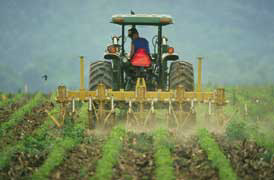
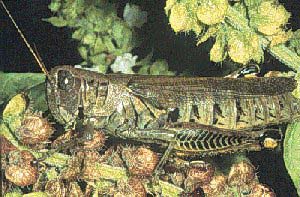 Small grasshoppers are beginning to appear in scattered spots over the western portion of the state. Most are wingless immatures, indicating that the population is still in the beginning stages. This is not an unusual situation, it is about the right time of year for them to appear. However, we are going into a bit of a dry spell and, if it is prolonged, there could be significant problems.
Small grasshoppers are beginning to appear in scattered spots over the western portion of the state. Most are wingless immatures, indicating that the population is still in the beginning stages. This is not an unusual situation, it is about the right time of year for them to appear. However, we are going into a bit of a dry spell and, if it is prolonged, there could be significant problems.
Kentucky soybean producers face two distinct problem situations with grasshoppers: 1) beans planted no-till into pasture or heavily weeded fields - this can occur at any time. 2) at the onset of any drought period, usually later in the season (e.g. August).
Currently, fields that have been planted no-till into standing grasses or heavy weed cover are at the greatest risk. It is not the no-till planting that is important but rather the "burn down" of the grass/weed cover. Typically, the problem results when fields are infested with hoppers in the weed cover (which no one notices!). The fields are planted in beans, and a burn-down herbicide is applied. As the herbicide kills the weed cover, the hoppers look for something green to eat and that is usually the emerging soybeans! At this time, most of the hopper population is made up of young wingless juveniles that cannot move great distances. The result can be very considerable feeding pressure on emerging beans.
This problem is generally not an epidemic occurrence, but rather catches people off guard in individual fields. Fields at greatest risk are: no-till, with heavy weed cover, and surrounded by heavy grass / weed areas. Sometimes spot or border treatments will be sufficient. However, this will change when the majority of the hoppers develop wings and can move over wider areas.
Control is not particularly difficult now. The problem is usually noticing this infestation before the damage is done. Insecticides can be used to protect the crop but they will not put tissue back on the plants!! This is especially important when plants are just emerging and only the seed leaves (cotyledons) are present.
If insecticides treatment is warranted, consult ENT-13 Insecticide Recommendations for Soybeans-2006. You may get this information at any County Extension Office or on line.
For more information about soybean pests, visit
"Insect Management Recommendations".

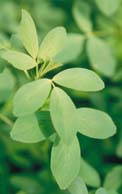
 Potato leafhoppers can land a powerful punch on spring-seeded alfalfa, as well as reducing quality of the second cutting from established stands. Control of the insect is not difficult but their small size makes it a challenge to find them before they harm the crop.
Potato leafhoppers can land a powerful punch on spring-seeded alfalfa, as well as reducing quality of the second cutting from established stands. Control of the insect is not difficult but their small size makes it a challenge to find them before they harm the crop.
 Hopperburn is the distinctive calling card that the small sap-feeding insects cause but by the time it is obvious in a field, the damage has been done. Hopperburn is a yellow, wedge-shaped area at the tip of an alfalfa leaf. It is the plant's distinctive response to leafhopper feeding. The damage may reduce plant height, protein and vitamin A content of the hay. Some diseases and nutritional deficiencies also cause yellowing of alfalfa but these symptoms usually start at the edge of the leaf and are not confined to the tips.
Hopperburn is the distinctive calling card that the small sap-feeding insects cause but by the time it is obvious in a field, the damage has been done. Hopperburn is a yellow, wedge-shaped area at the tip of an alfalfa leaf. It is the plant's distinctive response to leafhopper feeding. The damage may reduce plant height, protein and vitamin A content of the hay. Some diseases and nutritional deficiencies also cause yellowing of alfalfa but these symptoms usually start at the edge of the leaf and are not confined to the tips.
Fortunately, there are effective management tools but you have to swing before the leafhoppers land their punch. The swinging starts with the 15"-diameter sweep net that is needed to sample these little insects. Five sets of 20 sweeps from randomly selected areas in a field, coupled with the average plant stem height, is the way to detect and assess the pest before the crop is hurt. A single, well-timed application of any one of several insecticides will provide excellent leafhopper control if numbers exceed treatment guidelines. Sweep net sampling is the key to getting the timing right, before hopperburn is apparent.
The adult potato leafhopper is winged, pale green, wedge-shaped insect about 1/8-inch long. The pale green to yellow nymphs, are wingless, smaller than the adults, and very quick. Consequently they can remain unnoticed until the plants show "hopperburn". Both stages feed on the undersides of leaves.
See Insect Recommendations
for more alfalfa pest recommendations.

 Squash bug adults are becoming active in winter and summer squashes. These inch-long sucking bugs damage cucurbit plants by removal a large amounts of plant sap. With transplants and small plants that have small, restricted root systems, squash bugs can remove sap to the extent that the plants wilt and may even die. Later in the summer on larger plants, squash bugs remove the sap from leaves and stems and can cause leaf yellowing and necrosis. More importantly, squash bugs transmit the bacteria causing Yellow Vine Decline in cucurbits.
Squash bug adults are becoming active in winter and summer squashes. These inch-long sucking bugs damage cucurbit plants by removal a large amounts of plant sap. With transplants and small plants that have small, restricted root systems, squash bugs can remove sap to the extent that the plants wilt and may even die. Later in the summer on larger plants, squash bugs remove the sap from leaves and stems and can cause leaf yellowing and necrosis. More importantly, squash bugs transmit the bacteria causing Yellow Vine Decline in cucurbits.
Squash bug is particularly a serious problem on pumpkins, winter and summer squashes were it builds to large numbers during the summer. However, as a vector of yellow vine decline they can transmit the disease to the previously mentioned cucurbits as well as watermelon and other melons.
Squash bug is commonly found on the undersides of leaves where they lay it eggs. With plasticulture fields, squash bugs are often at the base of the plants beneath the plastic. The protection they get under the plastic may make control with foliar sprays more difficult.
During the coming weeks, squash bug will lay eggs on the undersides of leaves. Upon hatching, squash bug nymphs resemble aphids. As they get older, they take on a grayish appearance as they develop a waxy coat. Generally, they younger nymphs are much easier to control than the larger nymphs. In addition, treatments targeting the young nymphs will facilitate superior coverage as the plant canopy is smaller.
Most complaints about squash bug occur later in the season when plants are large, spray coverage is more difficult, and the nymphs produced by the overwintering generation are beginning to cause noticeable damage. Unfortunately, this is too late to begin squash bug control. Control needs to begin early in the season when the adults begin to arrive. The reason for this is three fold, first their numbers are lower so there are fewer to control; the plants are smaller so it is easier to get complete coverage with sprays, and because they transmit the bacterium that causes Yellow Vine Decline, infection of the young plants needs to be avoided.
Because squash bugs persistently transmit the bacteria causing Yellow Vine decline, control of the disease is through early and effective control of the adult squash bug. Many growers are using at-planting systemic insecticides (Neonicotinoid: IRAC group 4A) for control of cucumber beetles, these treatments will also control squash bug for three to four weeks after transplanting. As these treatments begin to lose their effectiveness, growers need to monitor for squash bugs and extend the control with foliar insecticides. Of the foliar insecticides, the pyrethroids (IRAC group 3) have been the most effective.

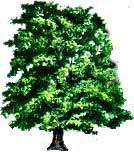
 Many insecticides are labeled for use against adult Japanese beetles on a wide range of landscape plants. Example pyrethroid insecticides include cyfluthrin (Tempo, Bayer Advanced Lawn & Garden Multi-Insect Killer), bifenthrin (Ortho Bug-B-Gon MAX Lawn & Garden Insect Killer Concentrate), , lambda cyhalothrin (SpectracideŽ TriazicideŽ Soil & Turf Insect Killer Concentrate), esfenvalerate (Ortho Bug-B-Gon Garden & Landscape Insect Killer) and permethrin (Spectracide Bug Stop Multi-Purpose Insect Control Concentrate and other brands). Pyrethroid products generally provide 2-3 weeks protection of plant foliage. Carbaryl (Sevin and other brand names) still is around and very effective and gives about a week of protection. A drench application of Bayer Tree & Shrub Concentrate is labeled for Japanese beetle control but is probably effective only under light beetle numbers.
Many insecticides are labeled for use against adult Japanese beetles on a wide range of landscape plants. Example pyrethroid insecticides include cyfluthrin (Tempo, Bayer Advanced Lawn & Garden Multi-Insect Killer), bifenthrin (Ortho Bug-B-Gon MAX Lawn & Garden Insect Killer Concentrate), , lambda cyhalothrin (SpectracideŽ TriazicideŽ Soil & Turf Insect Killer Concentrate), esfenvalerate (Ortho Bug-B-Gon Garden & Landscape Insect Killer) and permethrin (Spectracide Bug Stop Multi-Purpose Insect Control Concentrate and other brands). Pyrethroid products generally provide 2-3 weeks protection of plant foliage. Carbaryl (Sevin and other brand names) still is around and very effective and gives about a week of protection. A drench application of Bayer Tree & Shrub Concentrate is labeled for Japanese beetle control but is probably effective only under light beetle numbers.
Those seeking a botanical alternative can try neem products such as Azatrol or Neem-Away (Gardens Alive), or Pyola (pyrethrins in canola oil) provide about 3 to 4 days of feeding deterrence. Insecticidal soap, extracts of garlic, hot pepper, or orange peels, and companion planting, however, are generally ineffective under moderate to high beetle pressure.
Foliage and flowers should be thoroughly treated. The treatment may need to be repeated if feeding appears to increase. Follow label directions and avoid spraying under windy conditions or when bees are foraging. Be sure the insecticide is registered for use on the plant or crop you intend to spray. If it is a food crop, note the minimum number of days that must be observed between the date of the last application and the date of harvest. Because Japanese beetles are attracted to favored host plants from a considerable distance, controlling white grubs in the lawn will not protect landscape plants from adult feeding.
Japanese beetle traps are sold in many garden centers. Commercially available traps attract the beetles with two types of baits. One mimics the scent of virgin female beetles and is highly attractive to males. The other bait is a sweet-smelling food-type lure that attracts both sexes. This combination of ingredients is such a powerful attractant that traps can draw in thousands of beetles in a day.
Research conducted at UK showed that the traps attract many more beetles than are actually caught. Consequently, susceptible plants along the flight path of the beetles and in the vicinity of traps are likely to suffer much more damage than if no traps are used at all. In most landscape situations, use of Japanese beetle traps probably will do more harm than good.
Reports from Extension Agents, landscape workers, and homeowners suggest that Phyllosticta leaf spot of sugar maples and Japanese maples is fairly prevalent in Kentucky this year. The disease is also sometimes known as purple eye spot, eye spot or purple-bordered leaf spot. Purple eye spot is often seen in forest-grown maples throughout the summer. The causal fungus, Phyllosticta minima, affects a broad range of Kentucky maples including sugar maple, silver maple, Japanese maple, red maple, black maple, Norway maple and box elder. Increased disease prevalence this year might be related to the cool, wet weather observed during much of May.
Symptoms. The leaf spots have tan centers with dark margins and appear as circular to angular lesions, little more than 1/4 inch in diameter, though they may appear larger when adjacent spots coalesce. The spots are scattered over the leaf and the margins of the spots have a reddish or purple color. Within the tan central area of the spots, tiny black pycnidia, often arranged in a ring, are visible even without the aid of a hand lens. If spotting is particularly heavy, some defoliation may occur.
Disease management. Rake up and destroy fallen leaves. This disease is not normally a threat to the life and well-being of maples.


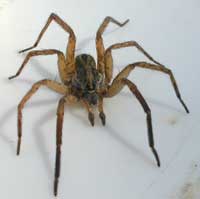 Numerous calls are received this time of year about spiders. Typically, the caller wants to know if the spider they've seen is dangerous, and what ? if anything ? should be done in terms of control. Many different kinds of spiders live in and around buildings. Some, such as the house, cellar, and garden spiders, construct webs to help entrap their prey. Others, like the wolf spider, roam freely and make no webs. The vast majority of spiders are harmless and in fact beneficial because they prey upon flies, crickets and other insects. They generally will not attempt to bite humans unless held or accidentally trapped against the skin. Most spiders have fangs too small or weak to puncture human skin. Of the hundreds of species found in Kentucky, only the black widow and brown recluse are dangerous. Fortunately, both are relatively uncommon, and have markings that can be used to distinguish them from other non-threatening species.
Numerous calls are received this time of year about spiders. Typically, the caller wants to know if the spider they've seen is dangerous, and what ? if anything ? should be done in terms of control. Many different kinds of spiders live in and around buildings. Some, such as the house, cellar, and garden spiders, construct webs to help entrap their prey. Others, like the wolf spider, roam freely and make no webs. The vast majority of spiders are harmless and in fact beneficial because they prey upon flies, crickets and other insects. They generally will not attempt to bite humans unless held or accidentally trapped against the skin. Most spiders have fangs too small or weak to puncture human skin. Of the hundreds of species found in Kentucky, only the black widow and brown recluse are dangerous. Fortunately, both are relatively uncommon, and have markings that can be used to distinguish them from other non-threatening species.
Although most spiders are harmless, few people are willing to tolerate them inside the home. Their unsightly webbing and fecal spots outweigh the beneficial aspects of spiders to most homeowners. This column provides practical tips on spider control for concerned clients.
General Control Measures (all species)
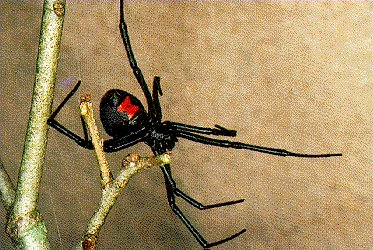 Both of these spiders are potential health threats. Most bites occur while putting on a shoe or piece of clothing where a spider has hidden, or while sorting through boxes, clutter, etc.
Both of these spiders are potential health threats. Most bites occur while putting on a shoe or piece of clothing where a spider has hidden, or while sorting through boxes, clutter, etc.
The female black widow is about 1/2-inch long, shiny black and usually has a red hourglass mark on the underside of the abdomen. In juvenile spiders, the hourglass mark may be reduced to two separate spots. Most adult brown recluse spiders are about the size of a dime to a quarter with legs extended. Coloration ranges from tan to dark brown, and the abdomen and legs are uniformly colored with no stripes or mottling. For laypersons, the most distinguishing feature of a brown recluse is a dark violin-shaped mark on its back, with the neck of the violin pointing toward the rear (abdomen) of the spider. Closer examination under magnification will reveal only three pairs of eyes toward the front of the head - most other spiders have eight eyes. Although both the black widow and brown recluse have distinctive markings, a "spider is a spider" to most people. Concerned homeowners or victims of spider bites should be advised to bring the specimen in for confirmation.
Spider bites are difficult to diagnose, even by physicians. Black widow venom is a nerve toxin and its effects are rapid. The victim suffers painful rigidity of the abdomen and usually tightness of the chest. Victims should seek medical attention promptly. The bite of the brown recluse is usually painless until 3 to 8 hours later when it may become red, swollen and tender. Later the area around the bite site may develop into an ulcerous sore from ˝ to 10 inches in diameter. Healing often requires a month or longer, and the victim may be left with a deep scar. Prompt medical attention can reduce the extent of ulceration and further complications. Not all brown recluse bites result in ulcerations and scarring.
The brown recluse may be found living indoors or outdoors. Black widows are more often encountered outdoors. Thorough inspection of cracks, corners, and other dark, undisturbed areas with a bright flashlight is an essential first step in determining the location and extent of infestation. Indoors, pay particular attention to basements, attics, crawl spaces, closets, under/behind beds and furniture, inside shoes, boxes of stored items, and between hanging clothing. Brown recluse spiders also may be found living above suspended ceilings, behind baseboards, and inside ductwork or floor/ceiling registers. Another way to detect infestations in these areas is to install several glue boards or sticky traps. Designed to capture mice and cockroaches, these devices can be purchased at grocery or farm supply stores. Placed flush along walls and in corners, they are useful monitoring tools and capture large numbers of spiders.
Brown recluse and black widow spiders also live outdoors in barns, utility sheds, woodpiles, and underneath lumber, rocks, and accumulated debris. To avoid being bitten, wear work gloves when inspecting inside boxes or moving stored items.
Each of the management tips (1-6) mentioned above for spiders in general are useful for the black widow and brown recluse. Removal of unnecessary clutter is especially helpful in making areas unattractive to these pests. Indoor infestations of brown recluse and black widow also warrant treatment with insecticides. Application should be directed into areas where spiders are living, contacting as many spiders and webs as possible.
Infestations of brown recluse or black widow spiders often require specialized skills, persistence and equipment to eradicate. Because these spiders are potential health threats, it is often prudent to call a professional. For detailed information about brown recluse spiders, consult the newly revised publication on the entomology department web site.

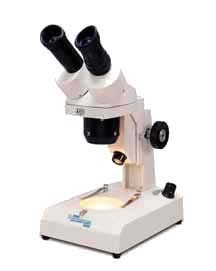
Agronomic samples received in the PDDL this past week included barley yellow dwarf virus on wheat; black root rot, black shank, tomato spotted wilt virus, blue mold, and manganese toxicity on tobacco.
On fruit and vegetable samples, we diagnosed Pythium root rot on blueberry; cedar-apple rust and frogeye leaf spot on apple; Phomopsis canker on peach; fire blight on pear; timber rot (Sclerotinia), tomato spotted wilt virus, bacterial canker, and flea beetle injury on tomato; and Pythium root rot on pepper.
Ornamental and turf samples included Guignardia leaf spot on Boston ivy; Botrytis blight on peony; Rhizcotonia web blight on verbena and petunia; Rhizoctonia root rot on hosta; Ascochyta leaf spot and dieback on clematis; Kabatina twig blight on arborvitae; Botryosphaeria dieback on rose; Melanconium dieback and Cytospora canker on birch; Fusarium canker on lilac; scab on crabapple; anthracnose on sycamore, maple, ash, and dogwood; leaf blister on oak; Verticillium wilt on magnolia; brown patch on fescue and Drechslera leaf spot on ryegrass.

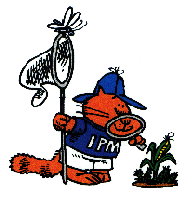
UKREC-Princeton, KY, June 2-9, 2006 | True Armyworm
| 6
| Corn Earworm
| 8
| European Corn Borer
| 0
| Black Cutworm
| 5
| Fall Armyworm
| 0
| | |
View Princeton trap counts for the entire 2006 season at - http://www.uky.edu/Ag/IPMPrinceton/Counts/2006trapsfp.htm
Fulton County trap counts are available at -http://ces.ca.uky.edu/fulton/anr/Insect%20Counts.htm
For information on trap counts in southern Illinois visit the Hines Report at - http://www.ipm.uiuc.edu/pubs/hines_report/comments.html The Hines Report is posted weekly by Ron Hines, Senior Research Specialist, at the University of Illinois Dixon Springs Agricultural Center.
NOTE: Trade names are used to simplify the information presented in this newsletter. No endorsement by the Cooperative Extension Service is intended, nor is criticism implied of similar products that are not named.
Lee Townsend
Extension Entomologist